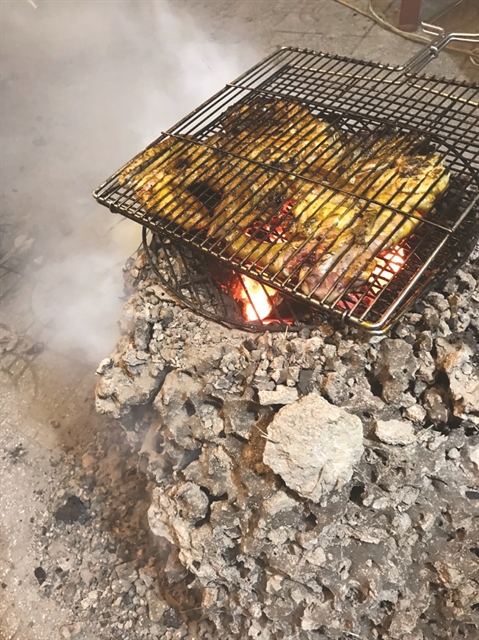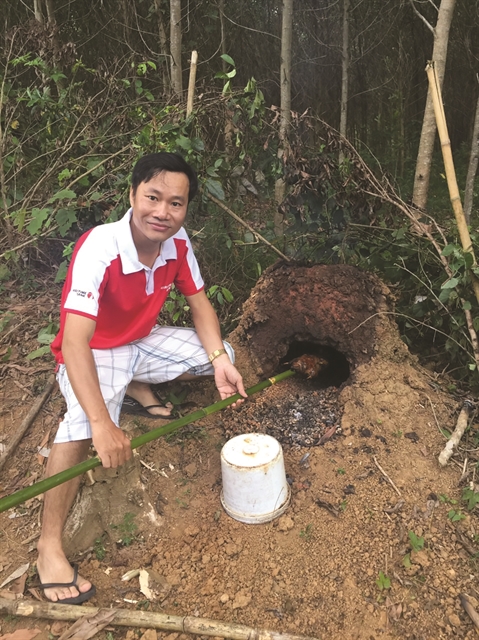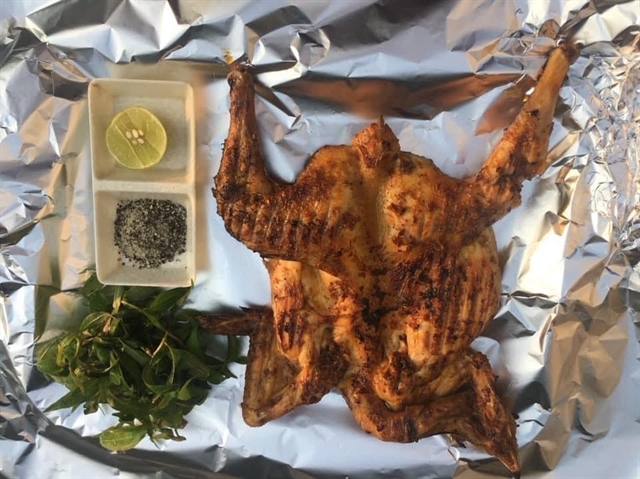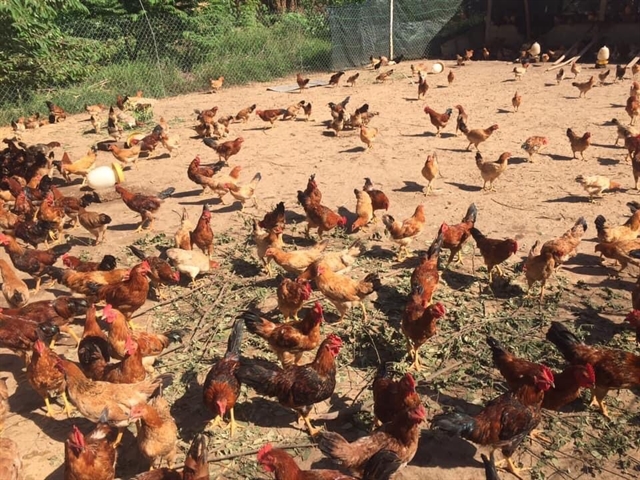Lê Hương
Huế is well-known for various traditional dishes like bánh bột lọc (tapioca dumplings), bún bò (beef noodles) and cơm hến (rice with mussels).
Yet not many people know of the special chicken dish from Huế called gà nướng tổ mối or chicken grilled over an open fire made from a termite nest.

Chicken, when grilled on a termite nest, can absorb the fragrance of the nest and termites. Photo courtesy of Hoàng Phước Quý
The dish was first made in Hương Thọ, an area near the upstream source of the Hương River, between two branches of the river called Tả Trạch and Hữu Trạch.
The area hosts a large area of keo tràm (Acacia auriculiformis) trees, which attract lots of termites to build nests.
Though termite nests from anywhere can be used to grill the chicken, the nests at the roots of this tree offer the best taste for the dish, according to locals.
The chicken should be the kiến breed, a local type of chicken that weighs 1.3-1.5kg each and offers sweet, tender meat after being grilled.
Local Mai An Thuận said the way to take the termite nest is by digging the soil around the nest, which was made by the termites from soft soil under the tree. The nest can burn for a long time and is difficult to be extinguished. An average-sized nest can be used to grill up to 10 chickens.
The heat from the burning termite nest can be used to grill chicken, duck, potato, corn and cassava. The natural fragrance of burnt termites and the nest will be absorbed by the food.

Hoàng Phước Quý grillls a chicken on a fire made from a nest of termites. Photo courtesy of Hoàng Phước Quý
Hoàng Phước Quý, who runs Thiên Phú Phủ Cam Restaurant that sells the dish on Nguyễn Trường Tộ Street in downtown Huế City, explained the secret's to the dish.
“The chicken is soaked with salt after being cleaned properly,” he told Việt Nam News. “After being left to dry, it is ready to be grilled without being marinated with any spices.
“Depending on customers’ taste, we can marinate the chicken with some forest bee honey while grilling,” he added.
The whole termite nest, which measures some 1m in diameter and weighs 10-20 kilogrammes, is carved apart so it is easier to light and the chicken is put in a curved part so the heat of the nest reaches the whole chicken.

A termite nest dug up ready to serve as an oven. Photo courtesy of Hoàng Phước Quý
He said chefs use dry leaves and small pieces of wood to set fire to the termite nest.
Once burnt the nest will be as hot as a charcoal oven. The chef should turn the chicken over again and again till it turns yellow all over.
The grilled chicken can be chopped or tore into small pieces to put on a lotus or banana leaf to make it look like a dish served in a more primitive era.

Grilled chicken is a must-try when visiting Huế. Photo courtesy of Hoàng Phước Quý
The restaurant uses a special kind of salt made of smashed leaf of giang (sour soup creeper) or cóc tree, both of which offer sour taste, as well as some lemongrass, green chilli and sugar.
These ingredients are all pounded and mixed well to serve as spices to eat with the grilled chicken.
“The fragrance of burnt termite mixed with tender sweet chicken and the mixture of sour, salty and sweet of the spices will make people remember Huế forever,” Quý said.

Hoàng Phước Quý (middle) at his restaurant with some customers. Photo courtesy of Hoàng Phước Quý
Customer Lê Hòa loves the dish.
“I myself don’t like chicken much,” she said. “Today I just tried a small piece to be polite to my friends, who invited me here. But then it urged me to eat more and more.
“I have been to Huế many times but this is the first time I have tried this dish. It’s so special.”
The chicken tastes so sweet and the skin is crispy and fatty, she said.
Quý said he is planning a kind of ecological tour to the Hương Thọ area, where visitors can enjoy the natural scenery and then eat chicken grilled over a termite nest.
He aims to create jobs for local people and offer community tourism while protecting the environment. VNS

Kiến chicken, which offers sweet and tender meat for the dish. The chickens are raised in the gardens of locals in Huế. Photo courtesy of Hoàng Phước Quý
OVietnam